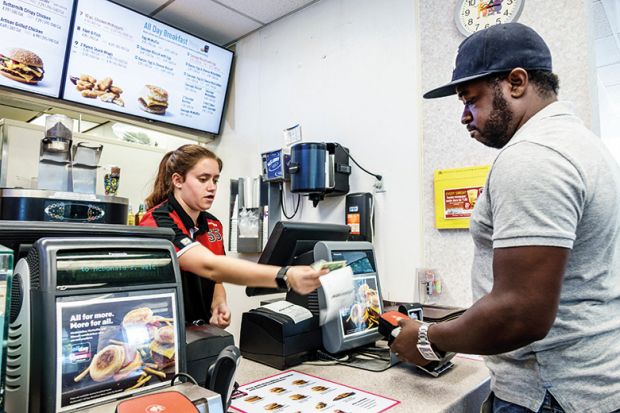Haven’t we had enough already? No, I’m not talking cheeseburgers. I’m talking about the steady diet of books and movies about America’s fast food folly that have appeared over the past two decades. Best-selling books such as Michael Pollan’s The Omnivore’s Dilemma and Eric Schlosser’s Fast Food Nation have helped to inspire a plethora of popular food films, from Supersize Me! to Food, Inc. It seems that we can’t get enough. We’re inundated with this stuff. Is there really more to say about the links between obesity and franchise food production? In her new book, American history scholar Chin Jou makes a convincing case that we’re just now getting to the meat of the matter.
Supersizing Urban America offers a fresh look at the history of fast food franchising in the US. Jou digests the Pollans and Schlossers of the world and then offers readers a second helping of scholarly research, providing a fine-grained analysis of why fast food chains came to colonise not only America’s suburbs but its downtown corridors as well. For example, Schlosser devotes just a few pages (literally two references in the index of Fast Food Nation) to the ways in which the Small Business Administration (SBA) helped McDonald’s and other firms grow. In contrast, Jou offers lengthy and detailed statistical distillations that show how this federal agency (and other government programmes, such as Bill Clinton’s Empowerment Zones/Enterprise Communities initiative) helped to promote fast food growth in minority communities in inner-city America (often in calculated efforts to quell urban unrest). Her findings are sometimes astounding. Take, for instance, this disturbing gem: in 2009, Subway was the “single largest beneficiary of SBA loan guarantees” designed to help small businesses compete in an economy dominated by large corporations.
But if my analysis above (and the title of the book, for that matter) suggests that Jou solely blames the government for Americans’ obesity woes, that would be an inaccurate reduction of her study. Jou’s narrative is much more nuanced. Many different groups, including the minority communities most endangered by fast food franchise expansion, bear some responsibility for the McDonaldisation of the nation. For years, the National Black McDonald’s Operators Association and the black human rights group Operation PUSH worked proactively to build golden arches in the country’s crumbling urban centres. In this sense, the lines between victims, villains and valiant heroes are blurred.
This is what makes the book’s 10-page concluding chapter, “Proposing solutions”, a bit frustrating. After rightly pointing out the incredible complexity of America’s fast food problem, the final chapter reads like a grab bag of half-explored strategies for deconstructing the nation’s unhealthy food system. Government initiatives such as the Supplemental Nutrition Assistance Program are thrown in with just a paragraph of analysis in a breathless finale that leaves the reader wanting more.
Nevertheless, Supersizing Urban America should be required reading for anyone seeking to understand the links between government policy, fast food franchising and the economic and biological health of urban communities. It’s a book that should make us rethink not only the way we eat but the foundations of American capitalism.
Bart Elmore is assistant professor of environmental history at Ohio State University and author of Citizen Coke: The Making of Coca-Cola Capitalism (2015).
Supersizing Urban America: How Inner Cities Got Fast Food with Government Help
By Chin Jou
University of Chicago Press, 248pp, £19.00
ISBN 9780226921921 and 1945 (e-book)
Published 3 May 2017
POSTSCRIPT:
Print headline: How downtown got fat and fried
Register to continue
Why register?
- Registration is free and only takes a moment
- Once registered, you can read 3 articles a month
- Sign up for our newsletter
Subscribe
Or subscribe for unlimited access to:
- Unlimited access to news, views, insights & reviews
- Digital editions
- Digital access to THE’s university and college rankings analysis
Already registered or a current subscriber? Login




